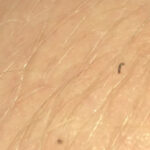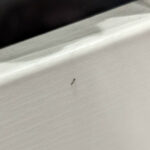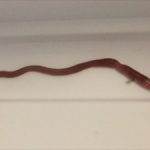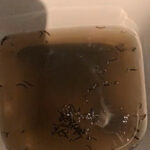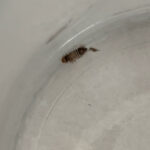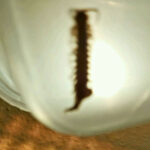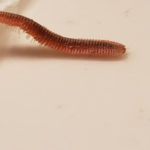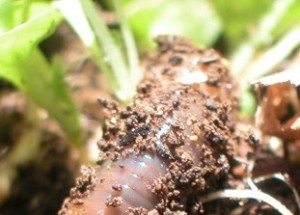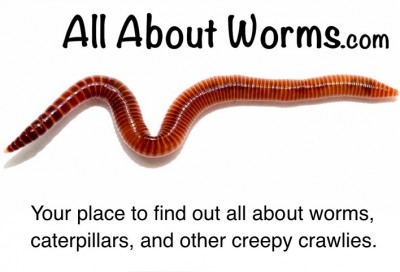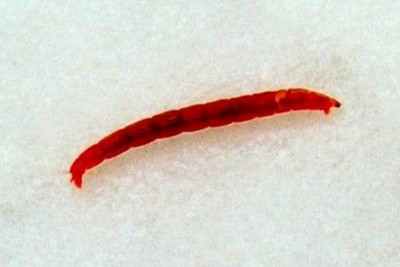Why do birds eat worms? The simple answer is: birds crave protein, but birds eat worms for a variety of other reasons as well. Worms are readily available in nature for birds to feed on and worms are quite easy to catch. Birds eat other insects as well, but in many cases, these insects are just as fast as the bird — making them tougher to catch. While birds do love the protein that worms wriggly little bodies offer, they also eat other foods that can be found in nature such as fresh fruits and vegetables, seeds, and other vegetation. Depending on the type of bird, they might also feed on scraps and “people” food, such as bread.
If you have a pet bird and you are concerned about its diet, you can’t go wrong by feeding your bird a well-balanced diet consisting of a high-quality pellet mix from the pet store along with plenty of fresh fruits and vegetables. If you want to feed your pet bird a good source of protein, go right ahead. Just don’t feed it worms or insects that you might find crawling around in your backyard. These worms and insects may have been exposed to dangerous pesticides or other substances that could be hazardous to your bird.
Instead of finding insects and worms on your own, visit any pet store and ask for farm-raised insects such as mealworms or crickets. Fortunately, because these insects are the typical diet for pet reptiles or other exotic pets, they will be free of toxins. Continue reading to learn more about one of the most excellent sources of food for birds, fish, and reptiles — mealworms!
About Mealworms
There are several types of worms that can be used as bait for fish, reptiles, and birds. Two of the most popular types include the Bait Worm and the Meal Worm. Mealworms are the larva of the mealworm beetle, which is the species of darkling beetle. Because of their high protein content, mealworms are mostly used as a food source, but they can also be used for composting. The market for mealworms is so demanding that they can be purchased at just about any pet store. Mealworms come in large containers filled with bran or oatmeal.
Believe it or not, the market for bait worms is just as huge and the marker for meal worms in the U.S. and most other parts of the world. It is estimated that in the state of Maine alone, more than 200 tons of bait worms are produced each year and in the UK, more than 700 tons are produced each year for both commercial and personal use. Japan, on the other hand, actually imports more than 600 tons each year from around the world. The bait worm market overall is estimated in the billions and billions of dollars each year. Bait worms are typically used for fish bait, but they can also be used for personal use compost and/or in farming or commercial compost.
The most popular type of bait worm is the earthworm, specifically the “night crawler.” Night crawlers are typically found on the top of soil at night, hence the name “night crawler.” They are also called “dew worms” because their numbers tend to increase when the ground is moist. Night crawlers are quite large in size. They can measure up to ten inches in length and up to 0.39 inches in diameter. The night crawler, whose scientific name is Lumbricus terrestris, has a unique dark colored “head” with a light colored flattened tail. At first glance you won’t notice it, but the night crawlers body is covered with “setae,” which are tiny bristles that help the worm move through the dirt and it also helps the worm anchor it’s body when it comes time to protect itself against predators.
The night crawler has a protein packed segmented body. Each segment is filled with fluid and the segments surround the worm’s digestive tract. The digestive tract is the same length as the worm, whatever size he may be. The night crawler has a brain and hearts, but it has no eyes, ears, or lungs. They absorb oxygen through their smooth and slimy skin, which is always moist, and they “hear” through their ability to feel vibrations on the ground. Although they do not have eyes, night crawlers are very sensitive to light. If they remain in the light for too long, the results can be fatal. The same is true if the worm’s body dries out. In the sunlight, it is highly possible that the worm’s skin can dry out, so if they are not buried deep within the earth or the lower layers of top soil, during the day, they can be found under rocks or bricks or underneath leaves or debris.
Whether you are purchasing worms to use as bait or for compost or farming, you can purchase bait worms from just about anywhere. You can purchase them at pet stores, both large and small, from live bait and fish stores, and through literally hundreds of sellers and retailers online. Bait worms are relatively cheap too. You can expect to spend anywhere from $35-$50 for 500 live night crawlers in person or shipped to your door.
All About Worms is always free, always reader-supported. Your tips via CashApp, Venmo, or Paypal are appreciated! Receipts will come from ISIPP Publishing.



